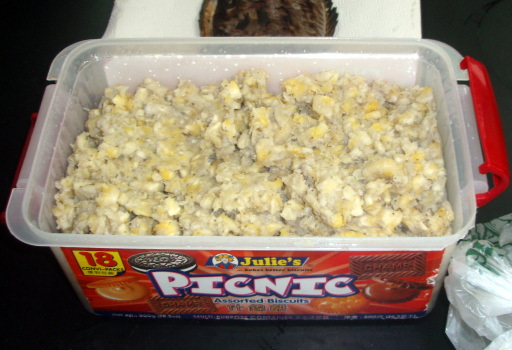
Chukese uuch sukusuk: pounded bananas with coconut

Chukese uuch sukusuk: pounded bananas with coconut
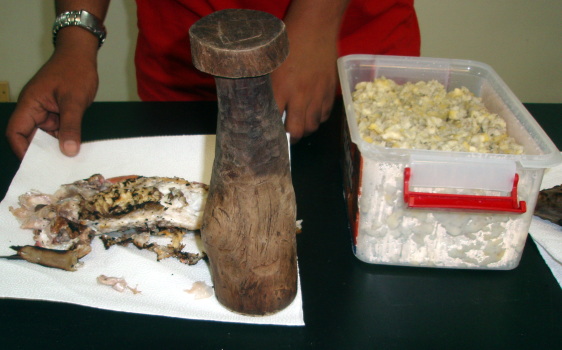
Uuch sukusuk
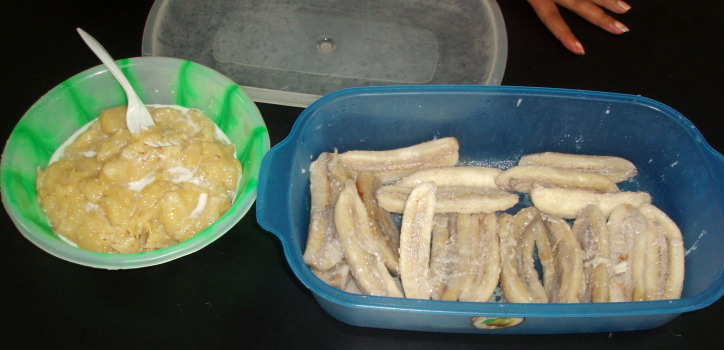
Pohnpeian uht sukusuk: pounded bananas with coconut milk and uht mwehl
Note that uuch sukusuk and uht sukusuk use the same inputs, the same cooking processes, and the same name and yet come out different. The key is the degree of the pounding and, to some extent, the temperature at which pounding occurs. One student felt that there was also likely a difference in the ripeness of the bananas used in the two processes. This is one key reason I ask the students to bring in their foods: a presentation without food would leave the impression that the foods are essentially the same. Yet in very fundamental terms of texture and taste they differ.
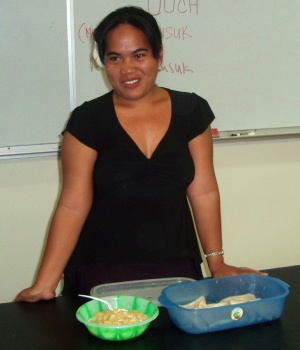
Resel
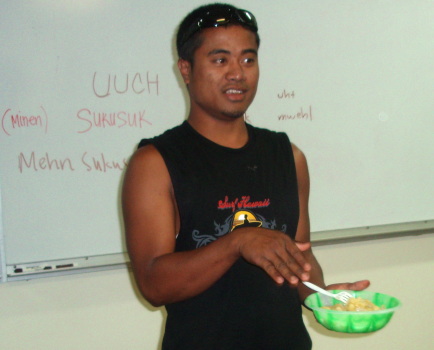
AJ Ioanis explains the process of the production of uht sukusuk and uht mwehl
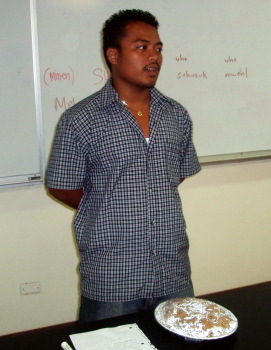
Bradmurray presents rohtamahn mwahng: taro
Grind the taro, squeeze in sugar cane juice, wrap in taro leaf, boil the taro. Meanwhile cook coconut juice in another pot, boil that too. After the taro is cooked, and while still hot, add the cooked coconut juice and pound the mixture.
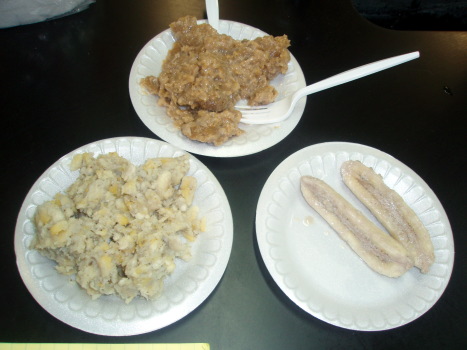
Uuch sukusuk, uht mwehl, rohtamahn
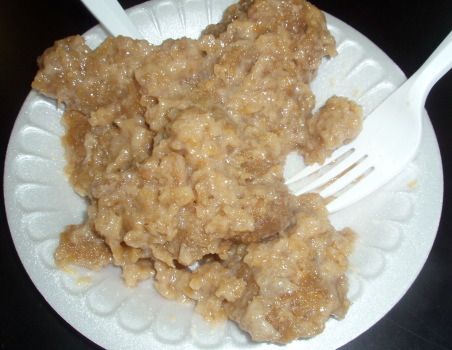
Rohtamahn
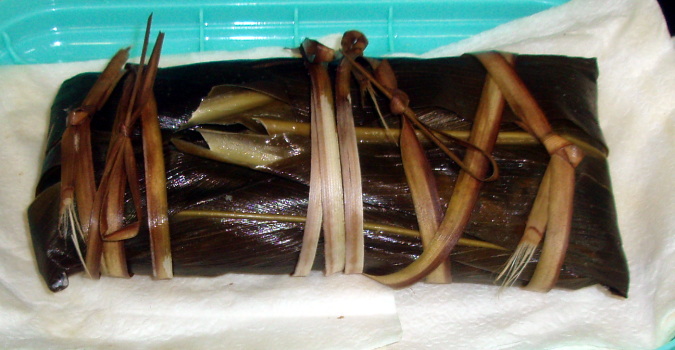
Suwesuw presented by Kimberley from Woleai, made from taro
Grind the taro, add sugar. Grind coconut, cook, add to taro. Wrap in ti (Cordlyline fruticosa). The ti leaf is tied using young coconut leaves or young betel nut palm (Areca catechu) leaves.
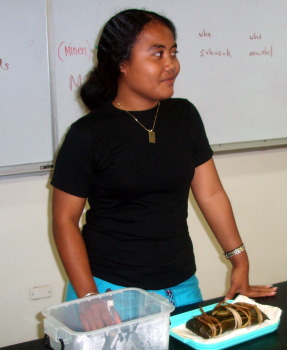
Kimberley
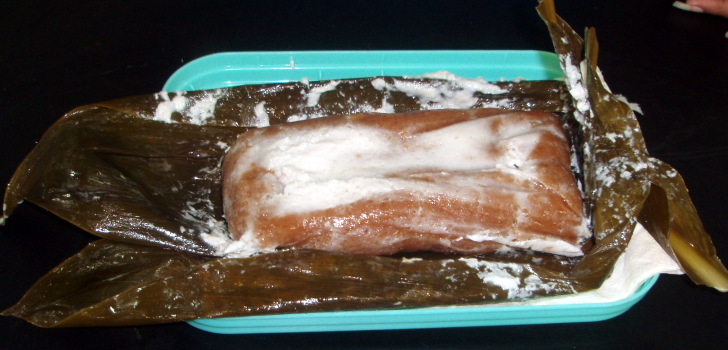
Suwesuw unwrapped: taro, coconut milk, ti leaf
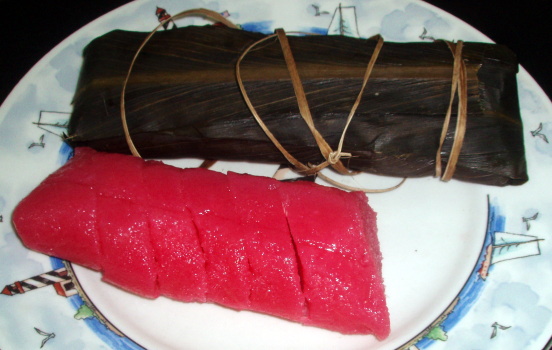
Thiyogang made of tapioca flown in from mainland Yap.
Thiyogang is tapioca boiled in a ti leaf. The color is red food coloring. On mainland Yap thiyogang is only eaten after it has cooled off. Eating it while still hot is simply not done.